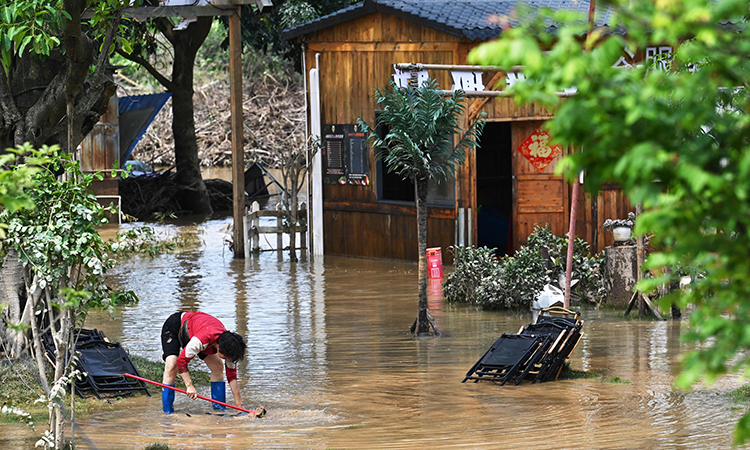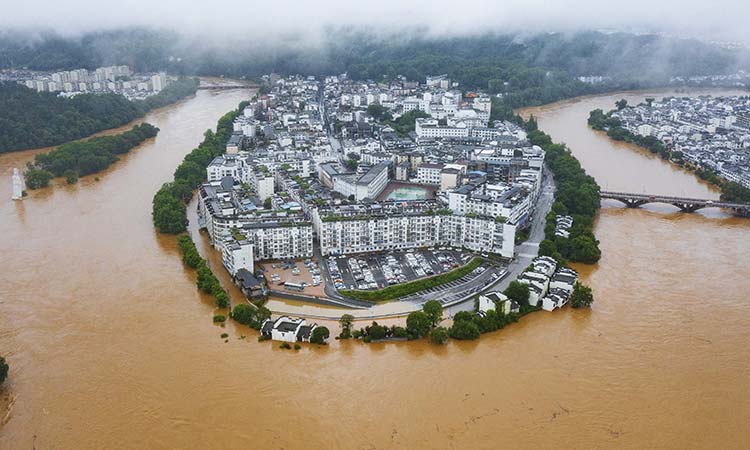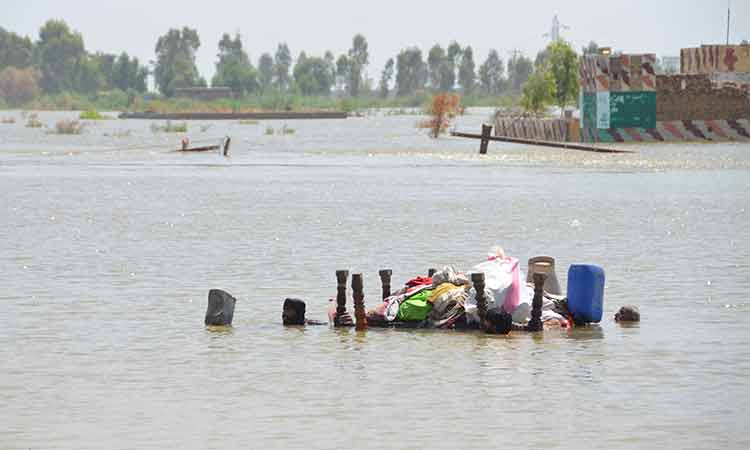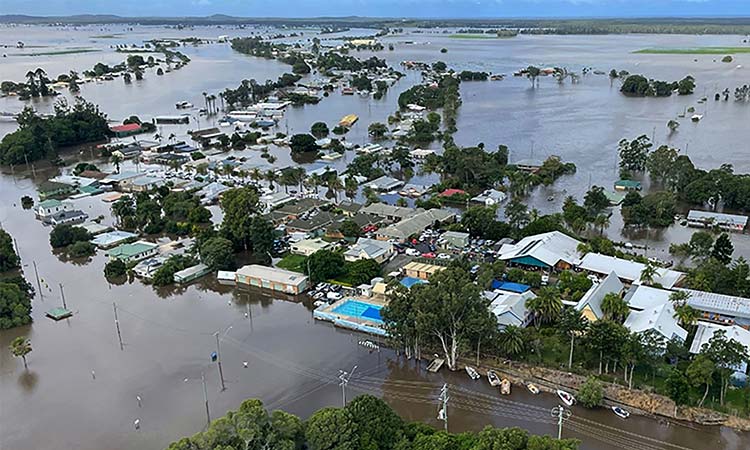Floods in Guangdong point to climate crisis

A woman collects chairs from muddy water after torrential rains flooded the area in Qingyuan, Guangdong. AFP
China’s southern province of Guangdong has been facing flooding because of heavy tropical rain for the last several days. The authorities are responding to the situation. The unrelenting rains have caused the flooding of the rivers, especially the Pearl River and its tributaries. This has inundated houses, rice fields.
People are stranded. Schools have been closed. The weather officials have called the situation “grim”, and said this was a one-in-50 chance of happening in any year. According to the Guangdong Department of Water Resources, the Pearl River and its tributaries including the Beijing rose 5.58 metres above the warning levels.
China has a four-level emergency response system, with Level I being the most severe. The province has begun the Level II response system. Wu Xiaolong, director of the Pearl River Water Resources Commission, said the downpour was marked by high intensity and wide impact area. This is seen as a situation that demands severe flood control measures. As rains are expected to continue, the Pearl River Commission will guide local authorities for floodwater storage and their release this week.
It was a 12-hour stretch of rain, which hit the central and northern parts of the Guangdong province, which has come to be known as the shop floor of the world. The cities that were battered by rain were Zhaoqing, Shaoguan, Qingyuan, and Jiangmen. The Guangdong Department of Emergency Management has asked all the departments to supply disaster relief funds and necessities to the affected people. A total of 14,779 residents from 4,502 households had been evacuated in Yangshan county and 19,349 in Yungde. They are administered by Qingyuan. Many of the sporting events, including a cross-country run and a half-marathon in Zhaoqing, had to be cancelled. In provincial capital Guangzhou and industrial hub Shenzhen flights had to be cancelled because of the heavy rains.
Weather experts say that this is due to climate change, and that increasing temperatures are causing heavy evaporation over South China Sea and Bay of Bengal, which resulted in higher precipitation leading to the incessant rain. Local residents say that before 2022, the weather was not so unpredictable nor were the rains so heavy in the province. In Qingyuan, the local people have started calculating the damage caused by the rains and floods. “My rice fields are fully flooded, my fields are gone,” said 61-year-old Huang Jingrong. He said, “I won’t be making any money this year, I will be making losses.” He estimated that he would lose about 100,000 yuan ($13,800). His argument is that he and other farmers won’t get reimbursed for the losses. The industrial activity would also be affected, and so would be the exports.
Extreme weather events of the kind that had hit Guangdong carry an economic price, and it would seriously affect jobs and overall economic growth along the whole supply chain. And this could be a recurring pattern in China and other parts of the world. The only thing that national governments and local administrations can do is to strengthen their emergency response systems, and allocate for disaster relief. And in budget estimates, climate change and the extreme weather events that they cause would have to be accounted for. The heavy rains and floods in Guangdong cannot be seen as a mere local event. It has to be treated as a warning of such events across the region. Greater cooperation among countries and governments becomes a key issue in coping with the problems of climate change. First, there would be the need to share meteorological information, and second there would arise the need to work collectively in providing relief to the affected people.







